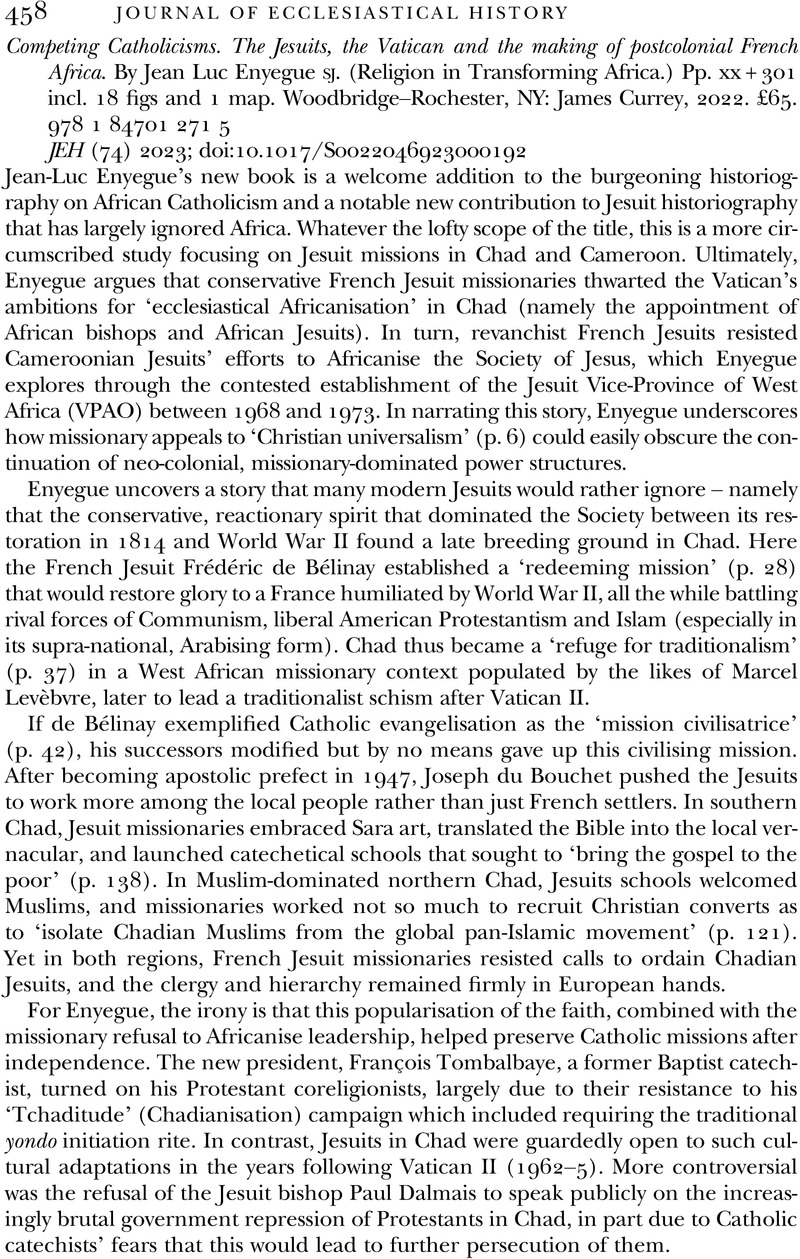No CrossRef data available.
Article contents
Competing Catholicisms. The Jesuits, the Vatican and the making of postcolonial French Africa. By Jean Luc Enyegue sj. (Religion in Transforming Africa.) Pp. xx + 301 incl. 18 figs and 1 map. Woodbridge–Rochester, NY: James Currey, 2022. £65. 978 1 84701 271 5
Review products
Competing Catholicisms. The Jesuits, the Vatican and the making of postcolonial French Africa. By Jean Luc Enyegue sj. (Religion in Transforming Africa.) Pp. xx + 301 incl. 18 figs and 1 map. Woodbridge–Rochester, NY: James Currey, 2022. £65. 978 1 84701 271 5
Published online by Cambridge University Press: 25 April 2023
Abstract
An abstract is not available for this content so a preview has been provided. Please use the Get access link above for information on how to access this content.

- Type
- Reviews
- Information
- Copyright
- Copyright © Cambridge University Press 2023



